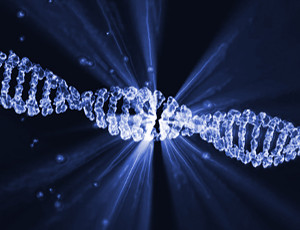
SensiTive Recognition of Individual DNA Ends (STRIDE) is a method which can, according to its inventors, not only detect, but also precisely pinpoint DNA damage in our genetic material. The team consisting researchers from the JU Faculty of Biochemistry, Biophysics and Biotechnology are already seeking patent protection for their invention with the help of the JU Centre for Technology Transfer CITTRU. They will further develop it via their newly founded company intoDNA.
‘The main subject of our current inquiry at the JU Department of Cell Biophysics are the mechanisms that govern DNA repair in human cells. For years, we’ve been studying different types of damage and various aspects of its repair. The problem was that every time we tried to determine the location of DNA breaks and the repair complex in relation to one another, we always had our doubts: we could see the repair proteins, which meant that something was happening, but where exactly was the damage?’, said Dr Magdalena Kordon.
‘Until recently, there was no tool available that would be able to identify individual instances of DNA damage. There were some methods that theoretically allowed that, but in practice were only good in detecting a very large number of DNA breaks – measured in hundreds, or even thousands. In other words, they were not very accurate and could not be employed in our research’, explained Dr Kordon.
‘We wanted to induce and study damage to chromatin which occurs naturally in cells, but we found other methods insufficient. They were useful only in cases where the damage was so severe that it frequently led to the cell’s death. We wanted to see how damage is repaired in normal conditions’, added Prof. Dobrucki.
Thanks to STRIDE, it became possible to detect individual breaks in our DNA.
How can STRIDE help us?

‘DNA breaks are created spontaneously in every cell in our bodies. And that’s not a problem if the damage can be fixed. However, there are many cases in which tit can't, and that leads to irregularities or diseases. STRIDE can be used as a diagnostic tool, though somewhat indirectly – it detects DNA breaks, which aren’t illnesses in and of themselves’, said Prof. Dobrucki.
Scientists are working on a number of pilot schemes related to adjusting the STRIDE method to various types of biological material. They are constantly finding new uses for it, and they have identified several commercial applications. Some of the most exciting are fertility tests and development of anti-cancer drugs.
Male infertility is directly correlated to the level of DNA fragmentation in the sperm. Sperm is not subject to any repair processes. Not taking into account the insemination potential of male reproductive cells, but only the development of foetus and successful pregnancy, it is generally thought that male fertility is largely based on the quality and integrity of genetic material transported to egg cells.
STRIDE can also be used together with CRISPR/Cas9, the new, precise method of DNA modification. It allows for checking the effectiveness of enzymes used to edit genetic material. ‘Ordinarily, a DNA chain has two natural ends. If it is severed, intentionally or otherwise, additional two are created. STRIDE can tell us exactly where they are’, explained Prof. Dobrucki. ‘CRISPR/Cas9 enables us to find a specific part of the genome, take it out and put some other fragment in its place. Thanks to our method, we’ll not only be able to see if we managed to properly cut the DNA chain, but to precisely determine the location of the cut. This way, we don’t have to wait to see if we edited DNA successfully’.
Currently, there are several ways of detecting DNA breaks, but none of them are as sensitive as the method conceived by JU scientists. Most of them, including STRIDE, are based on immunofluorescence. They yield much data, but are not exactly precise in showing the location of DNA damage. As previously mentioned, that is not the case with STRIDE.
‘Thinking of something is just the first step. It takes a lot of time to refine the idea and apply it in actual projects. It’s also important to make sure that the invention works as intended, and that the data is interpreted correctly’, said Dr Kordon. ‘It turned out that our idea was well thought-out, and worked perfectly from the very beginning’.
For more information on JU innovations and inventions, visit the JU Centre for Technology Transfer CITTRU website.





